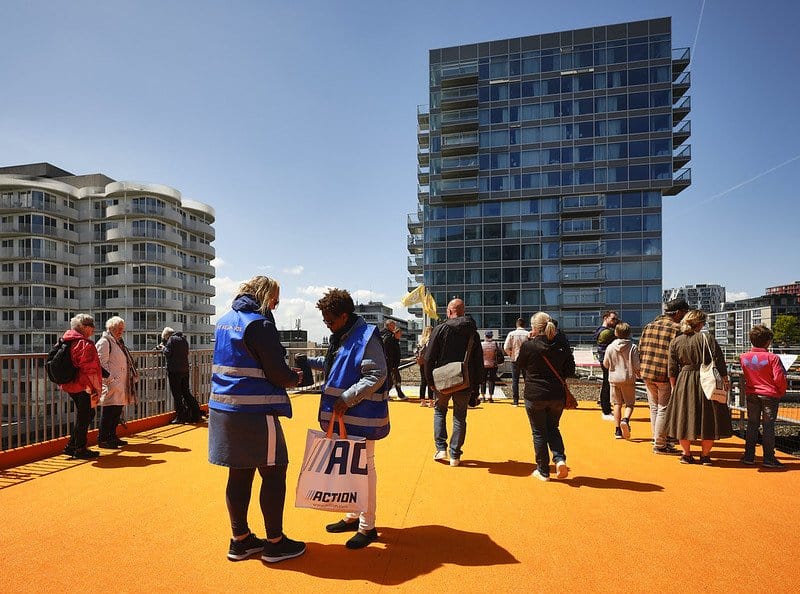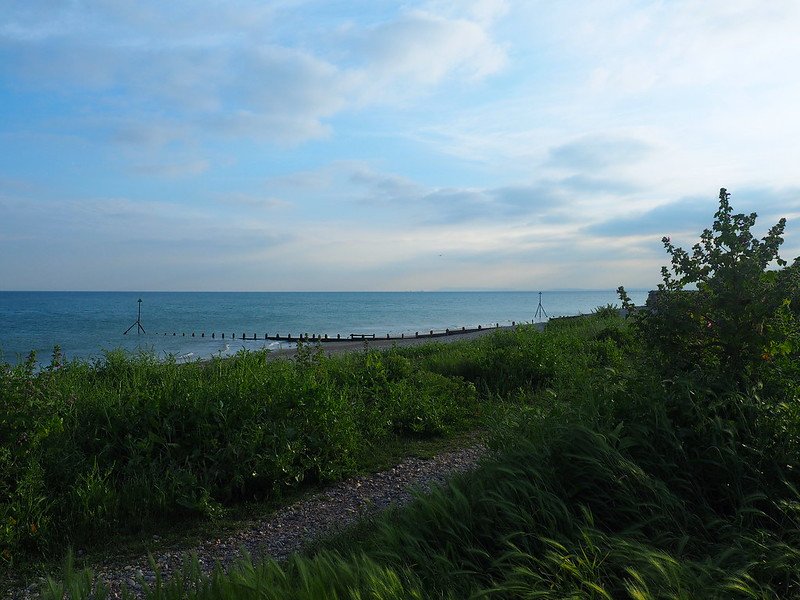Kiss the sky
This week marks the end of a month-long whimsical skywalk through Rotterdam. Since May, the Dutch city has been showcasing its rooftops with a network of “air bridges” that span the chasms between buildings.
The idea is to make residents more aware of an often under-utilized urban space: the hundreds of rooftops that can be used for anything from growing vegetables to socializing with neighbors. The skywalks are accessible by exterior stairs and elevators. Rotterdam hopes that by making rooftops open to the public from the outside, people will think more about their many benefits.

Leon van Geest, director of the Rotterdam Dakendagen Festival, said roofs offer an array of perks, not least of which is more space for plants and biodiversity. Green roofs can also cool down a hot city by as much as five degrees and reduce building energy use by up to 0.7 percent. And for some groups, like small children or older folks, rooftops offer a calmer, traffic-free respite from the hubbub of city life.
But van Geest emphasizes appealing roofs can’t make up for a poorly designed city at street level. “If on the ground level, things are not well, first fix the ground level. Rooftops are not a replacement or a reason to look the other way.”
High and dry
An excerpt from the forthcoming book The Water Always Wins takes us to Selsey, England nearly a decade after the town became part of England’s largest retreat from rising sea levels back in 2013.

“Planned retreat” is a growing trend in climate change adaptation, in which communities threatened by coastal flooding voluntarily abandon their land and move to drier ground. Selsey, a small town two hours southwest of London, was one of these. Nine years ago its flood-prone residents began selling their farms and properties to the government. One decided it “seemed a reasonable way out” after years of expensive flood mitigation efforts. Others were heartened to see the return of a thriving coastal habitat. The project has uncovered some wonders as well, including a submerged Neolithic oak forest now visible at low tide, and a human skull and spine that date back to the Iron Age.
“A lot of what we are realigning is just land that we have claimed from the sea,” said one ecologist. “There’s a sense of … we stole it from salt marsh 200 years ago; we should be putting it back.”
Doula little dance
As increasingly intense storms put pressure on emergency shelters, a collective of doulas in Louisiana has been making sure the babies in those shelters get the nutrition they need.
Infant nutritional needs are a major gap in emergency planning (and can be precarious even in normal times, as the recent formula shortage has shown). In 2005, several babies died of dehydration following Hurricane Katrina, the result of disaster response that didn’t adequately factor in infant needs.
Weighed down by negative news?
Our smart, bright, weekly newsletter is the uplift you’ve been looking for.The Birthmark Doula Collective works to make sure that doesn’t happen. After Hurricane Laura displaced over 10,000 Louisiana residents in 2020, the collective descended on emergency shelters with dish soap, bottle brushes and liquid formula that doesn’t require refrigeration. They also activated a 24-hour infant-parent emergency hotline staffed with doulas and lactation counselors, partnering with an organization that could translate into Spanish. The hotline received 60 calls in the four weeks following the storm.
“Things could have been going great at home but then you had to evacuate,” said one doula. “You forgot your pump, now one side is engorged … How can we support the family because everything else has changed?”










